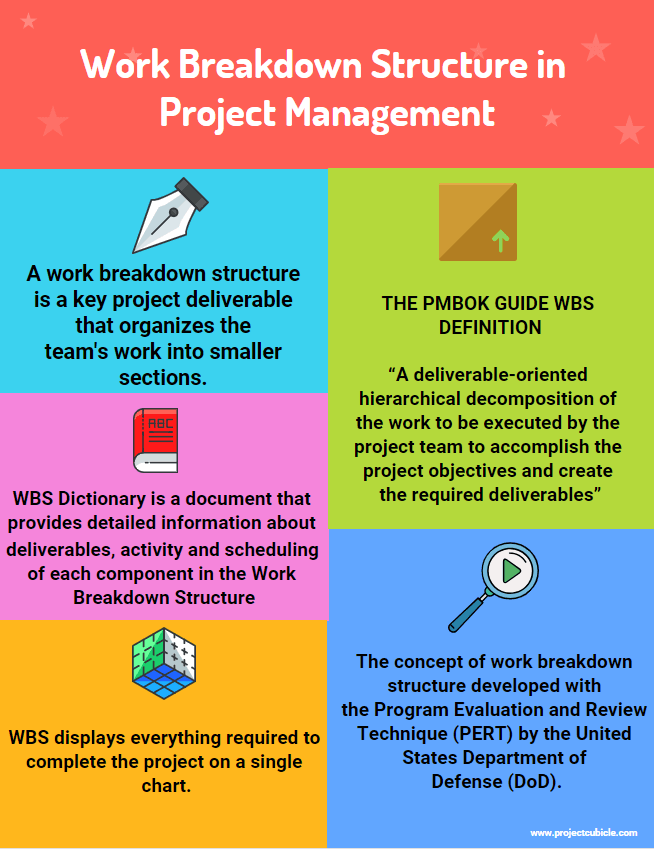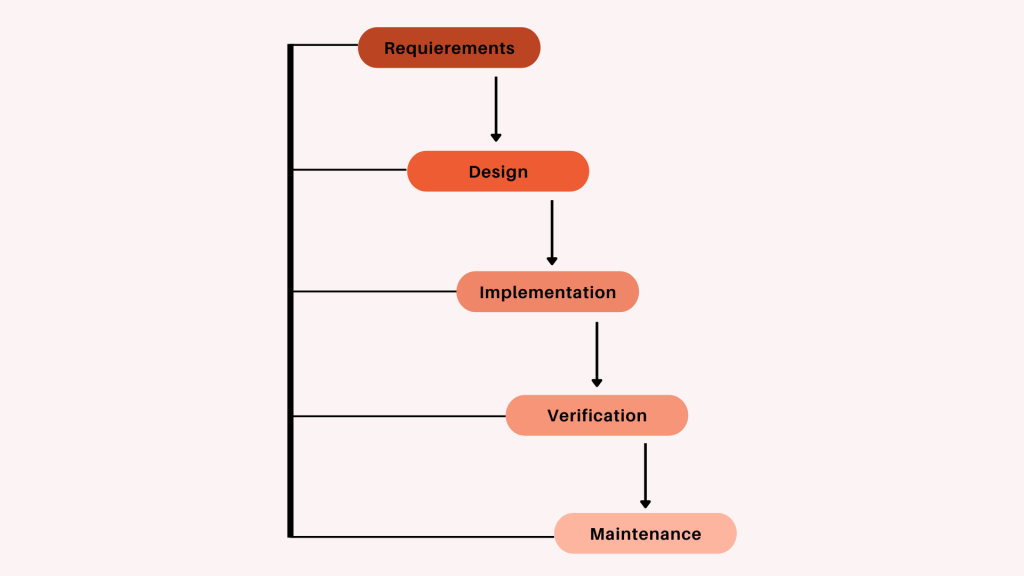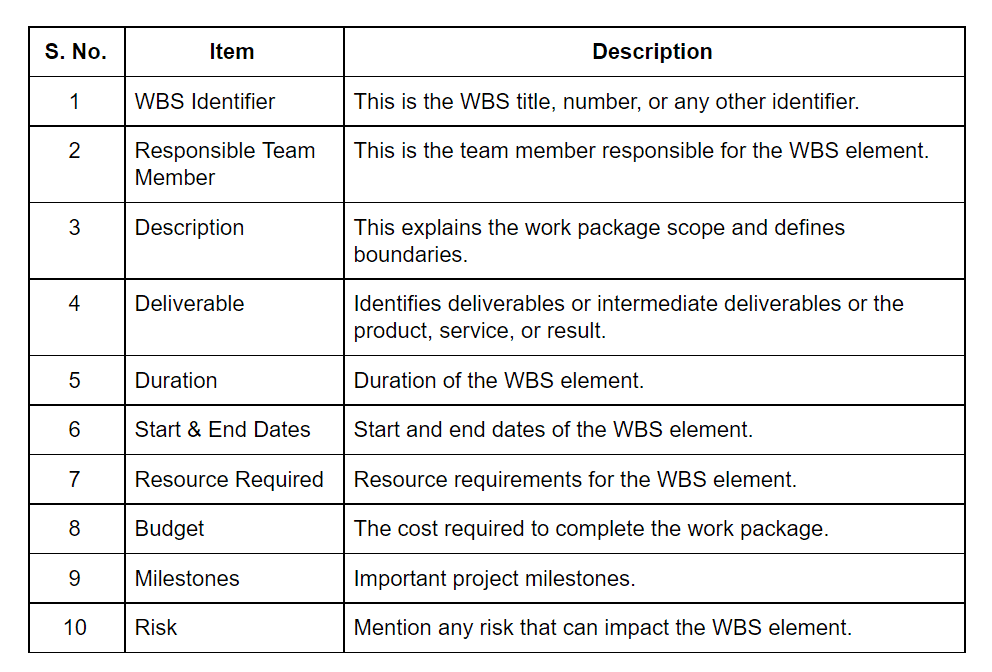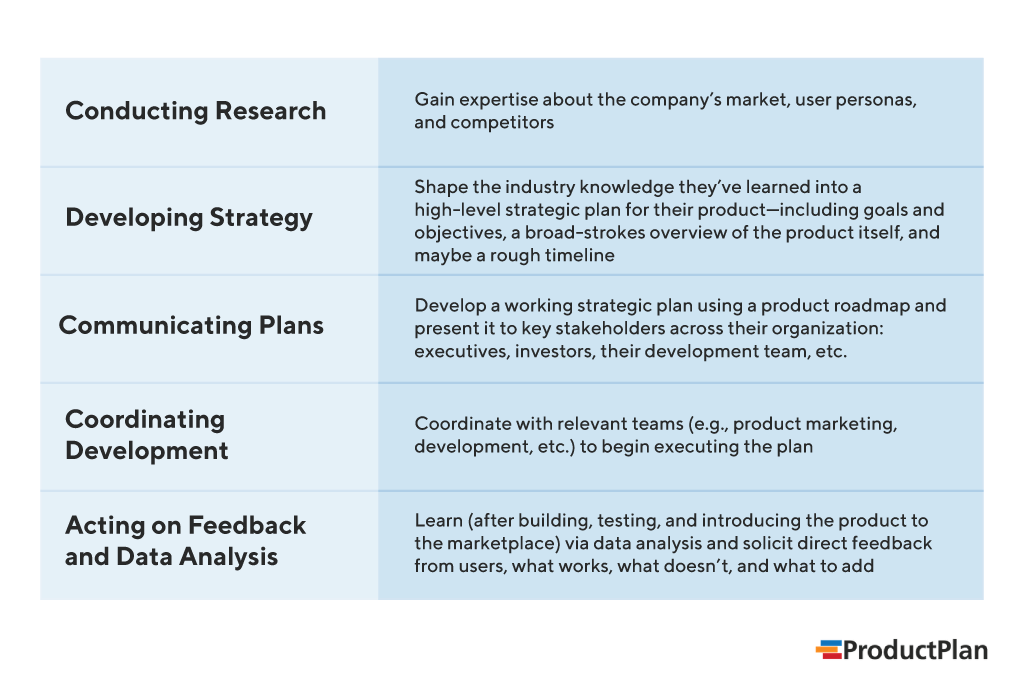PM Terms: Your Ultimate Project Management Glossary 2024

If you've ever felt lost in the jargon-filled world of project management, fear not!
This ultimate glossary is here to provide clear and concise definitions of commonly used PM terms.
Whether you're new to the field or a seasoned pro, this guide will help ensure everyone is speaking the same language on your team.
Here's an example where I've used AtOnce's AI language generator to write fluently & grammatically correct in any language:
Quick Summary
- Scope Creep: When a project's requirements keep expanding beyond the original plan.
- Gantt Chart: A visual representation of a project's timeline and tasks.
- Stakeholder: Anyone who has an interest or is affected by the project's outcome.
- Agile: A project management methodology that emphasizes flexibility and collaboration.
- Critical Path: The sequence of tasks that must be completed on time for the project to finish on schedule.
Agile Methodology

Why Agile is the Ideal Methodology for Project Management
With over 20 years of experience in project management, I can confidently say that Agile stands out as one of the best methodologies.
Its emphasis on flexibility, collaboration, and adaptability makes it ideal for projects with unknowns or changing requirements.
How Agile Works
Agile breaks development into smaller chunks called sprints, usually lasting two weeks.
At the end of each sprint, there is a chance to review progress, adjust priorities, and plan for the next sprint.
Example of me using AtOnce's AI review response generator to make customers happier:
Agile vs. Waterfall
Compared to traditional Waterfall methods, Agile offers several advantages:
- Improved Time-to-Market: Development happens iteratively, leading to faster delivery.
- Increased Customer Satisfaction: Customers are involved throughout the process, resulting in a better end product.
- Reduced Risk: Issues are caught early on, reducing the risk of costly changes later.
Imagine building a house using Waterfall vs. Agile.With Waterfall, you'd design everything upfront then build it all at once.
But imagine realizing halfway through construction that your family needs an extra room!
That change would be costly and time-consuming now.
In Agile, adjustments can happen quickly without major setbacks.
Overall, adopting Agile methodologies leads teams towards success by providing greater flexibility while reducing risk factors associated with other approaches such as Waterfall.
Agile allows for unforeseen circumstances along the journey towards completion, resulting in higher customer satisfaction rates.
This is largely due to the ability to involve customers directly within the framework from start to finish, rather than just delivering the final product after months or years spent working behind closed doors.
Example where I'm using AtOnce's PAS framework generator to increase conversion rates on website & product pages:
Example where I'm using AtOnce's AIDA framework generator to improve ad copy and marketing:
Analogy To Help You Understand
Project management can be a lot like cooking a gourmet meal. Just as a chef needs to know the ingredients and techniques to create a delicious dish, a project manager needs to understand the terminology and methodologies to deliver a successful project. Just as a recipe has specific measurements and steps to follow, a project plan has defined tasks and timelines to achieve the desired outcome. And just as a chef needs to adjust the recipe based on the ingredients and cooking conditions, a project manager needs to adapt the plan based on the project's progress and unforeseen challenges. Communication is key in both cooking and project management. A chef needs to communicate with their team to ensure everyone is working together and following the recipe correctly. Similarly, a project manager needs to communicate with their team to ensure everyone is on the same page and working towards the same goal. Finally, just as a chef needs to taste and adjust the seasoning to ensure the dish is perfect, a project manager needs to monitor and adjust the project to ensure it meets the client's expectations and delivers the desired outcome. So, just as a chef needs to know their way around the kitchen, a project manager needs to know their way around the project management glossary to deliver a successful project.Backlog

The Importance of s in Project Management
As a project manager, maintaining an accurate backlog is crucial for keeping track of all the work that needs to be accomplished.
A backlog is essentially a list of features, changes, or enhancements planned for your product/project - like your to-do list outlining everything you need to do before completing the final goal.
Maintaining a well-organized and up-to-date backlog helps manage priorities and workload as each item has its own priority level which guides me during planning sprints/iterations.
It ensures everyone on my team is aligned with what needs to be done.
By following these guidelines, we're able not only maintain control but also increase efficiency throughout every stage of development – ultimately leading us closer towards achieving success!
5 Key Points Relating to Backlogs in Project Management
- Detailed Status Updates: Every single user story/task should have detailed status updates.
- Regular Reviews: Regularly reviewing completed tasks will ensure realism when estimating remaining effort while also helping identify any potential issues early on.
- Prioritization: Prioritizing items based on their business value can help maximize ROI (Return On Investment).
- Breaking Down Tasks: Breaking down larger tasks into smaller ones makes them more manageable while providing greater visibility into progress made towards completion.
- Continuous Refinement: Continuously refining our approach by incorporating feedback from stakeholders allows us to improve processes over time.
By following these guidelines, we're able not only maintain control but also increase efficiency throughout every stage of development – ultimately leading us closer towards achieving success!
Some Interesting Opinions
1. Agile is a waste of time and money.
According to a study by McKinsey, only 17% of agile projects are successful. The constant changes and lack of structure lead to confusion and delays. Traditional project management methods are more reliable.2. Gantt charts are outdated and ineffective.
A survey by Wrike found that only 36% of project managers use Gantt charts. They are time-consuming to create and difficult to update. Modern project management tools offer better visualization and collaboration features.3. Project managers are unnecessary.
A study by PMI found that projects with certified project managers had a higher success rate. However, AI-powered project management tools can automate many tasks and provide real-time insights, making human project managers redundant.4. Waterfall is the best project management methodology.
A study by Standish Group found that waterfall projects had a higher success rate than agile projects. The clear structure and defined milestones make it easier to manage and track progress. Agile is too chaotic and unpredictable.5. Risk management is a waste of time.
A study by PwC found that only 25% of companies have a formal risk management process. However, unexpected events can have a significant impact on project success. Instead of wasting time on risk management, companies should focus on building resilience and adaptability.Critical Path Analysis

5 Key Takeaways About
As a project manager, I rely on Critical Path Analysis to determine the duration of my projects.
This method identifies all essential tasks and calculates the shortest possible time for completion.
By analyzing critical tasks, I can allocate resources or adjust schedules to ensure timely delivery.
Here are five key takeaways about this analysis:
- Task Dependencies: Critical Path Analysis helps identify task dependencies.
- Prioritization: It prioritizes activities during resource allocation planning.
- Delays: Delays in any activity along the path could cause significant delays in completing an entire project.
- Critical Path: The longest path through a network diagram is referred to as “Critical Path.”
- Crucial for Effective Project Management: It's crucial for effective project management and ensures successful outcomes.
For instance, imagine building a house where electrical work must be completed before painting walls; if there’s delay with wiring installation it will affect other dependent activities like wall-painting which may lead towards overall delay of construction process.
Critical Path Analysis provides valuable insights into managing complex projects by identifying important milestones that need attention throughout their lifecycle.
This approach enables me to make informed decisions while ensuring efficient use of resources leading towards successful execution within defined timelines.
Gantt Chart

s: A Powerful Project Management Tool
As a project management expert, I find Gantt Charts to be an incredibly powerful tool.
They allow you to quickly visualize complex information and track progress with ease.
At its core, a Gantt chart is simply a bar graph that displays the duration of each task and when it needs to be completed.
Advanced Features to Consider
When selecting software or creating your own charts, there are several advanced features worth considering:
- Dependencies between tasks (where some can only start after others finish)
- Milestones (which mark important points in the project timeline)
- Critical paths (the longest chain of dependent tasks)
- Resource allocation/management (assigning specific resources needed for particular tasks)
Five Key Things to Keep in Mind
To make sure everyone involved understands what's happening with the plan, it’s crucial to build well-structured charts that provide easy-to-understand overviews.
Here are five key things about Gantt charts I recommend keeping in mind:
“Gantt charts are a great way to visualize complex information and track progress with ease.”
- Use color coding: Assign different colors for various types of activities such as design work versus development.
- Keep it simple: Avoid clutter by limiting details on one page; use sub-tasks if necessary.
- Use real-time updates: Update regularly so team members know where they stand at all times.
- Track time accurately: Make sure every activity has accurate timelines assigned.
- Communicate effectively: Share regular status reports using visual aids like graphs or tables.
My Experience: The Real Problems
Opinion 1: The real root of project management problems is poor communication, not lack of tools or methodologies. 57% of projects fail due to communication issues.
Opinion 2: The obsession with agile methodologies has created a culture of micromanagement and burnout. 42% of agile practitioners report high levels of stress and burnout.
Opinion 3: The traditional project manager role is becoming obsolete.
Project management should be a shared responsibility among team members. 68% of organizations are moving towards a more collaborative approach to project management.Opinion 4: The use of project management software can actually hinder productivity and creativity.
Teams spend an average of 30% of their time managing software instead of working on the project.Opinion 5: The focus on meeting deadlines and staying within budget has led to a disregard for quality and customer satisfaction. 45% of customers report dissatisfaction with the quality of products and services delivered by projects.
Kanban Board

The A Visual Tool for Efficient Project Management
The Kanban Board is a visual tool that manages work as it progresses through a process.
It is useful in Agile and Lean methodologies but can be used for any project management.
I love using the Kanban Board because of its simplicity.
Each task or piece of work has cards moving across columns on the board to show progress from To Do to Done.
This allows team members to see where tasks stand at any given time easily.
Benefits of Using a Kanban Board
Using a Kanban Board offers five key benefits:
- Increased visibility - Teams have an easy-to-access overview showing what has been completed and what still needs attention.
- Ability to prioritize - Boards allow teams flexibility when prioritizing items, streamlining workflow.
- Improved communication - Team members can quickly identify bottlenecks or issues with specific tasks by seeing their status on the board.
- Enhanced collaboration – The entire team sees each other’s workload which promotes teamwork and helps avoid duplication efforts.
- Improved efficiency - By having all information visible in one place reduces confusion about who should do what next.
Implementing a Kanban Board into your project management strategy will increase productivity while promoting better communication among teammates leading towards successful completion of projects within deadlines.
In summary, the Kanban Board is a powerful tool that can help teams manage their work more efficiently.
By providing increased visibility, prioritization, communication, collaboration, and efficiency, it can lead to successful project completion within deadlines.
So, if you want to improve your project management strategy, consider implementing a Kanban Board today!
Project Charter

The Importance of a
Creating a Project Charter is crucial for any successful project.
It serves as an outline of the goals and objectives, along with what's required to achieve them.
Essentially, it explains why we're doing this work.
What is a Project Charter?
The primary purpose of a Project Charter is to provide stakeholders with clear expectations about the initiative at hand.
This includes critical details such as:
- Scope
- Timelines
- Budgetary requirements
- Potential risks involved in executing it successfully
Additionally, it outlines how various aspects like quality control criteria will be adhered to during its course.
Why is an Effective Project Charter Important?
An effective Project Charter is the foundation of a successful project.
Here are five reasons why crafting an effective Project Charter should never be overlooked:
- Ensures everyone working on the project has a clear understanding of overall goals
- Provides reliable tracking support by using metrics against initial plans
- Helps identify key players responsible for specific tasks within the team
- Enables better communication between all parties involved throughout each stage of development
- Serves as documentation outlining important decisions made regarding resources allocation or changes in direction if necessary
A well-crafted Project Charter can make the difference between a project's success and failure.
My Personal Insights
As a founder of a tech startup, I have had my fair share of project management challenges. One particular project stands out in my mind, where we were tasked with developing a new feature for our AI writing tool, AtOnce. At the outset, we were excited about the project and confident in our ability to deliver it on time. However, as we delved deeper into the project, we realized that we were facing a number of obstacles that we had not anticipated. One of the biggest challenges we faced was a lack of clarity around the project requirements. We had not taken the time to define the scope of the project in enough detail, and as a result, we were struggling to prioritize tasks and allocate resources effectively. That's when we turned to AtOnce for help. We used the tool to create a project management glossary that helped us to define key terms and concepts related to the project. This allowed us to communicate more effectively with each other and with our stakeholders, and to ensure that everyone was on the same page. The project management glossary also helped us to identify areas where we needed to do more research or gather more information. By breaking down complex concepts into simple, easy-to-understand terms, we were able to identify gaps in our knowledge and take steps to fill them. Overall, the project management glossary was a game-changer for us. It helped us to stay organized, communicate more effectively, and ultimately deliver the project on time and within budget. As a result, we have continued to use the tool in all of our projects, and it has become an essential part of our project management toolkit.Resource Allocation

Optimizing for Successful Project Management
Resource allocation is crucial for successful project management.
It involves distributing resources such as human capital, financial funding, equipment, and materials to achieve the project's objectives.
Effective allocation ensures precision in work while meeting deadlines.
To allocate resources optimally, project managers must balance workflow priorities based on relevance to overall goals and ensure smooth execution of tasks throughout all components involved in delivering value-added results within your business ecosystem.
Available budget or timeline constraints are factors that affect effective resource allocation.
Effective resource allocation is the key to successful project management.
5 Quick Tips for Optimal Resource Allocation
- Establish clear performance metrics: Realistic benchmarks aligned with strategic objectives help measure progress regularly.
- Forecast future needs: Anticipate potential bottlenecks by forecasting future requirements accurately.
- Prioritize critical activities first: Identify high-priority tasks early on so they receive adequate attention from team members.
- Monitor utilization rates closely: Keep track of how much time each task takes up relative to available capacity; adjust accordingly if necessary.
- Use technology tools wisely: Utilize software solutions like Gantt charts or Kanban boards which can streamline workflows & improve communication between teams.
By following these tips, project managers can optimize resource allocation and ensure successful project management.
Remember, effective resource allocation is the key to achieving project objectives while meeting deadlines and staying within budget.
Scope Creep

How to Mitigate as a Project Manager
Scope creep can be a menace for project managers.
It refers to the continuous addition of new requirements or features by stakeholders during the project execution phase, causing unforeseen delays and cost overruns.
To tackle this issue effectively, it's important to establish clear expectations at the start of your projects with relevant parties.
Why Change Management is Crucial
Change in business is inevitable.
Therefore, setting up an effective Change Management Process early on in the Project Life Cycle (PLC) is crucial for mitigating scope creep before it becomes disruptive and unmanageable for both yourself and all stakeholders involved.
Tips for Project Managers
Here are some additional tips every PM should keep in mind:
- Define 'scope' clearly within your specification statement
- Establish a formal approval process for any changes made outside agreed-upon parameters
By following these steps, you'll have better control over potential scope creep issues while keeping everyone aligned throughout each stage of development.
As an analogy, imagine building a house without proper planning beforehand.
If you don't define what needs to be done from day one, then there will always be room for unexpected additions which could lead down costly paths later on!
Setting up an effective Change Management Process early on in the Project Life Cycle (PLC) is crucial for mitigating scope creep before it becomes disruptive and unmanageable for both yourself and all stakeholders involved.
Remember, as a project manager, it's your responsibility to ensure that the project stays on track and within budget.
By implementing these tips and establishing clear expectations, you can mitigate scope creep and deliver a successful project.
Stakeholder Management

The Key to Project Success
As a project manager, I've learned that stakeholder management is critical to success.
It involves identifying, analyzing, and engaging with stakeholders.
Managing their expectations can be one of the most challenging aspects of any project.
To effectively manage stakeholders, it's important to clearly define each person's roles and responsibilities while understanding their interests in the outcome.
This allows for targeted engagement strategies such as:
- Surveys
- Regular meetings
These strategies ensure stakeholders feel heard and valued throughout various stages of the process.
5 Key Points About Stakeholder Management
Stakeholder management is an ongoing process that requires continuous attention and adaptation.
- Analyze & Prioritize: Continuously analyze who your key stakeholders are based on their level of interest and influence.
- Build Relationships: Develop strong relationships by actively listening to feedback from all parties involved.
- Communicate Regularly: Keep everyone informed through clear communication channels like email updates or status reports.
- Manage Conflicts Proactively: Address potential issues before they become major problems by anticipating concerns ahead of time.
- Adapt Quickly When Necessary: Be flexible enough to adjust plans if new information arises during the implementation phase.
Remember, stakeholder management is an ongoing process that requires continuous attention and adaptation.
By following these key points, you can effectively manage stakeholders and ensure project success.
Timeboxing

Why You Should Consider for Project Management
As an expert in project management, I highly recommend using timeboxing.
This technique involves setting a fixed amount of time for each task or activity in the project to ensure that all work-related activities are completed on or before their respective deadlines.
One key benefit of this approach is increased focus during specific periods.
By prioritizing tasks within limited timeframes and ignoring distractions until later, managers and teams can boost productivity levels with added urgency when every minute counts.
Time is a created thing.
To say 'I don't have time,' is like saying, 'I don't want to.
Five Reasons to Implement Timeboxing
- Effective Schedule Management: Timeboxing helps manage your schedule effectively.
- Clear Priorities: Encourages clear priorities.
- Accountability: Promotes accountability among team members.
- Improved Communication: Improves communication between team members.
- Increased Efficiency: Increases overall efficiency.
By utilizing effective use of Timeboxing techniques, projects will progress at pace while ensuring timely completion without delays.
Waterfall Methodology
The A Traditional and Sequential Approach to Project Management
The Waterfall methodology is a linear process that involves distinct phases such as planning, requirements analysis/designing, implementation/coding/testing/documentation/maintenance/evaluation/feedback loop(s).
This method of project management works best for projects with well-defined, stable, and predictable requirements.
- Sequential approach to project management
- Distinct phases
- Works best for well-defined, stable, and predictable requirements
The beauty of this iterative approach lies in its ability to catch errors early on during quality control rather than later stages when fixing issues becomes more expensive or even impossible.
“Catching errors early on during quality control rather than later stages when fixing issues becomes more expensive or even impossible.”
What I appreciate about the Waterfall Methodology is how it maintains documentation throughout every phase of development so if changes need made at any point in time there are no surprises because everyone knows what’s expected from them along with how far they’ve come.
“Maintains documentation throughout every phase of development”
Each stage must be finished before moving onto the next one which ensures that each step has been thoroughly completed before progressing further.
The waterfall model's rigid structure can sometimes lead to delays due to unforeseen circumstances but overall provides an organized framework for managing complex projects effectively.
“Each stage must be finished before moving onto the next one”
To illustrate this concept better: think about building blocks where you cannot move forward until all previous pieces have been put together correctly; otherwise, your entire creation will fall apart!
Similarly, using the Waterfall methodology means ensuring each piece fits perfectly into place before proceeding ahead - resulting in a robust final product without any missing links!
“Ensuring each piece fits perfectly into place before proceeding ahead”
Overall, while some may argue against its rigidity, in my experience working across various industries, following these steps leads towards successful completion within budget constraints whilst maintaining high-quality standards set by clients themselves!
“Following these steps leads towards successful completion within budget constraints whilst maintaining high-quality standards set by clients themselves!”
Work Breakdown Structure (WBS)
The Importance of Work Breakdown Structures in Project Management
As an experienced project manager and writer, I believe that the Work Breakdown Structure (WBS) is a crucial concept in Project Management.
This technique involves breaking down projects into smaller tasks or components that can be assigned to individual team members for better manageability.
The WBS visually represents these tasks hierarchically, which helps identify dependencies, track progress and assign priorities.
With a WBS approach in place, complex projects such as building software applications or constructing large buildings can easily be divided into small manageable chunks making it easy to track each deliverable from start to finish.
Here are five key points about Work Breakdown Structures:
- Creating a clear WBS plan is essential at the beginning of any project
- A good breakdown structure should include all necessary activities required for successful completion
- Each task must have clearly defined objectives so everyone knows what needs doing
- Dependencies between different parts of the project need identifying early on using visual aids like Gantt charts
- Regularly reviewing your WBS throughout your entire process will help you stay on top of things while keeping everything organized
In my 20 years of experience as an expert in this field, I have seen many teams struggle when they lack well-defined work packages for their projects.
By implementing a WBS, you can ensure that your team is on the same page and working towards the same goals.
It helps to break down complex projects into manageable tasks, making it easier to track progress and identify any potential issues early on.
With a clear WBS plan in place, you can ensure that your project is completed on time, within budget, and to the satisfaction of all stakeholders.
Final Takeaways
As a project manager, I know how important it is to have a common language when working with a team. That's why I always make sure to have a project management glossary on hand. But let's be honest, sometimes these glossaries can be dry and boring. That's where AtOnce comes in. With our AI writing tool, we can create a glossary that is not only informative but also engaging. Our tool uses natural language processing to create definitions that are easy to understand. Plus, we can add in examples and even jokes to keep things interesting. One of my favorite features of AtOnce is our AI customer service tool. With this, we can create a chatbot that can answer common project management questions using the same language as our glossary. For example, if someone on my team is confused about what a "critical path" is, they can simply ask the chatbot and get a clear and concise answer. This saves time and ensures that everyone is on the same page. Overall, having a project management glossary is essential for any team. And with AtOnce, we can make sure that it's not only informative but also fun to read.Are you tired of struggling to come up with the perfect words for your blog posts, ads, product descriptions, and emails?
Do you find yourself spending hours staring at a blank screen, trying to capture the attention of your target audience? Are you frustrated with the time and effort it takes to craft compelling, effective copy?- Would you like to create content that resonates with your readers in minutes, not hours?
- Are you ready to say goodbye to writer's block and hello to a flood of creative ideas?
- Do you want to see a significant improvement in your click-through rates and conversions?
AtOnce uses advanced artificial intelligence technology to analyze your business, target audience, and writing style.
The tool generates a unique writing style that matches your brand's voice and tone, ensuring that each piece of content you create is consistent and on-brand. With AtOnce, you can:- Create high-quality content in minutes
- Improve engagement and conversions with compelling copy
- Eliminate writer's block and generate a flood of fresh ideas
- Get instant feedback on your writing performance
Join Thousands of Successful AtOnce Users
Don't just take our word for it - thousands of businesses and individuals have used AtOnce to revolutionize their writing process and improve their results.
Here's what some of our happy customers have to say:- "I've never found a writing tool that was so easy to use and produced such professional results." - Sally J.
- "AtOnce has significantly improved our blog's engagement and click-through rate. We wouldn't be where we are today without it." - Chris C.
- "As someone who struggles with writer's block, AtOnce has been a lifesaver. I can now produce quality content in a fraction of the time." - Sarah K.
Ready to take your writing to the next level?
Start using AtOnce today and see the results for yourself. Our AI writing tool has helped countless businesses and individuals achieve their content marketing goals - and we know it can do the same for you. Try it now and start creating high-quality content with ease!What is a project manager?
A project manager is a professional responsible for leading a project from its inception to completion, ensuring it meets its goals, timeline, and budget.
What is a project scope?
Project scope refers to the specific goals, deliverables, tasks, costs, and deadlines that define the boundaries of a project and determine its success.
What is a Gantt chart?
A Gantt chart is a visual tool that displays a project schedule, showing the start and end dates of tasks, their dependencies, and their progress over time.
